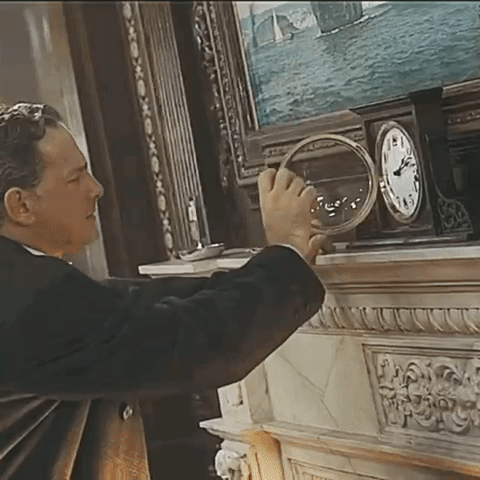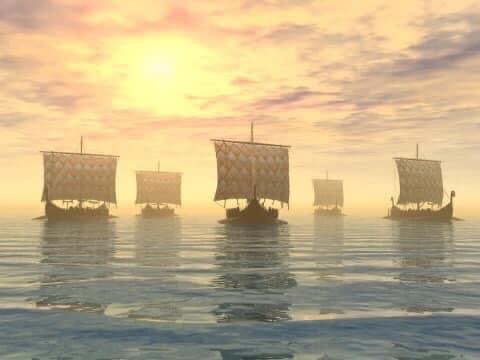#strangford lough
Text
Celtic Mythology | Devorgilla
Dervorgilla came from Norway and was a stranger in Ireland. She had listened to so many tales about Cú Chulainn that she decided he would have to be her only love. She left Norway accompanied by her maid alone. To accomplish the journey the both changed into swans and flew to Lough Cuan in Ireland. Cú Chulainn and his brother wandered near to Lough Cuan and on seeing the swans they decided to…

View On WordPress
#Cú Chulainn#Celtic Mythology#Co. Armagh#Co. Down#Dervorgilla and Celtic Mythology#Emain Macha#Lough Coan (Strangford Lough)#Lough Cuan#Lugaid#Navan Fort#Norway#Standing Stone#Swans
15 notes
·
View notes
Text
A Legend of Strangford Lough
John Vinycomb
When fairies lived in this old land,
And kelpies held the streams,
Such nights were seen and music heard
As come to me in dreams.
To the lone peasant’s fond belief,
In legend wild and gory,
Of sprite benign and goblin dam’d,
Is due to this wondrous story:
How the rude savage glories most
In terrors weird and fearful,
While timid souls take up the tale
With sadd’ning hearts and tearful.
They saw in fairy-haunted earth
The elfins sport and play;
They heard unearthly music float
Between the night and the day,
And feared, if seen, to be bewitched,
Or carried under ground,
To dance by night in fairyland
To magic music’s sound.
They feared the moonlight’s baleful sheen
By lonely moor or river;
They feared the dreaded weird banshee
That wails for mortals over.
But more they feared the Sweet Merroe
That haunts the lonely shore,
For he who hears th’ enchanting strain
Is lost for evermore.
And who is there that has not heard
Of sirens of the sea,
The mirrow dread of Strangford Lough,
The Mermaid of Mahee?
The sea-maid there would of times haunt,
At evening’s silent close,
With tuneful harp and songs so sweet,
When from the waves she rose.
Her golden locks in freedom float
Around her lovely form;
Her beauteous face, with eyes so blue,
Deride the coming storm.
She thrills the air with melodie,
So sweet, so clear, so high,
That the lone fisher turns to hear,
And listen with a sigh.
For well he know he may not stay,
His earthly lot is over;
Follow he must beneath the waves
The Mermaid, as her lover.
And tales are told how many a one,
Lost in Loch Cuan’s tide,
Had heard the Mermaid’s charmed strain,
And fied with her to bide,
In coral caves beneath the waves,
Or sport by pearly strand;
Transformed by fairy sea-maid’s power
To Merman jovial band.
And once, ‘tis said, a holy monk,
On Mahee sacred soil,
Was lost to sight for many a day,
No more a priest to toil.
For he, beguiled by character’s strains,
Swiftly dived in after,
Nor had he thought of brethren,
Or Abbot’s hearty laughter.
For, married to a Mer-Mayden
At bottom of the sea,
He lived and frolic’d with the best,
Forgot was Isle Mahee.
Till once again her heard the chime
Of Matins sweetly sound,
And blessed himself – before he knew,
Transported was to ground.
Beside his round tower’s lofty pile
He knelt him down to pray,
And bade the brethren – this believe –
To swear by Saint Mochae.
And now in after years come back,
With mind distressed and hazy,
Told how he’d lived beneath the sea,
The brethren cried, “He’s crazy.”
The Abbot frowned with look severe,
Thought sadly of the man –
And maiden’s eye – then slowly said,
“We’ll put him under ban.”
Said he, “You’ll live and dream your dreams
Within your prison cell,
High in the round tower’s topmost round,
And ring the service bell.”
0 notes
Text

The Butterlump, Strangford Lough
William Alfred Green (1870–1958)
Ulster Folk Museum
88 notes
·
View notes
Text










Titanic (1997) - dir. James Cameron
Victor Garber as Thomas Andrews, father of the Titanic.
In appearance he made a fine figure, standing nearly six feet high, weighing some two hundred pounds, well-built, straight, with broad shoulders and great physical development. He had dark brown hair, sharp clean-shaven features; you would call him handsome; his brown eyes met yours with a look of the frankest kindliness, and when he gripped your hand he took you, as it were, to himself. Even as you see him in a portrait you feel constrained to exclaim, as many did at first sight of him, “Well, that’s a man!” He had a wonderful ringing laugh, an easy way with him, an Irishman’s appreciation of humour. He was sunny, big-hearted, full of gaiety. He loved to hear a good story, and could tell you one as well as another. He had the luck to be simple in his habits and pleasures, his food, his dress, his tastes. Give him health, plenty of friends, plenty of work, and occasionally some spare hours in which to enjoy a good book (Maeterlinck’s Life of the Bee for preference) and some good music, to go yachting on Strangford Lough, or picnicking at the family bungalow on Braddock Island, or for a long jolly ride with Mrs. Andrews in their little Renault round the Ards Peninsula, and he was thoroughly content. When of a Saturday evening he opened the door, so the servants at Ardara used to say, they like all the rest waiting expectantly for his coming, it was as though a wind from the sea swept into the house. All was astir. His presence filled the place. Soon you would hear his father’s greeting, “Well, my big son, how are you?” and thereafter, for one more week’s end, it was in Ardara as though the schoolboy was home for a holiday. You would hear Tom’s voice and laugh through the house and his step on the stairs; you would see him, gloved and veiled, out working among his bees, scampering on the lawn with the children, or playing with the dog, or telling many a good story to the family circle. Everyone loved him—everyone. - Sandra F. Bullock, Thomas Andrews: Shipbuilder
🏷️ : @blanchett / @hannahgrose / @magicaplin / @madeline-kahn / @viggo-mortensen / @usergrinch .
#media: titanic (1997)#gifshistorical#perioddramaedit#perioddramasource#titanic 1997#rms titanic#thomas andrews#rose dewitt bukater#history#film edit#gifset#victor garber#calliestag#* gif’s for normal people#— 𝐓𝐈𝐓𝐀𝐍𝐈𝐂 (𝟏𝟗𝟗𝟕)
493 notes
·
View notes
Text

Saturday's sunset from Horse Island, Strangford Lough.
A golden sunset that also threw beautiful lighting behind me and even a 1 second rainbow. No chance of seeing a sunset this evening though!
Photography by Fran Kennedy
7 notes
·
View notes
Text
Halfdan was one of the leaders of the Viking Great Army of the 9th-Century; one of his brothers was Ivar (usually identified with the “Ivar the Boneless” of the sagas).
The 'Great Heathen Army' arrived in England in autumn 865, and killed the kings of Northumbria and of East Anglia in the next four years.
In the autumn or early winter of 870, Halfdan and his warband left East Anglia and invaded the kingdom of Wessex, establishing their base at Reading.
The Anglo-Saxon Chronicle - which for this period is a near contemporary source - gives a detailed narrative of the campaign that followed: the vikings fought nine general engagements against the West Saxons who were led by their king, Æthelred I and his brother - and successor - Alfred.
The most important of these battles took place on the Berkshire Downs, at the place called Ashdown, in January 871.
The viking army was drawn up in two divisions: one, opposed by Alfred, was led by various jarls; the other, which King Æthelred engaged, was under the command of 'the heathen kings Bagsecg and Halfdan'.
Ashdown was a West Saxon victory, but it was only one in a series of battles that winter. The two sides were at stalemate, despite the arrival of a 'great summer army’ to reinforce Halfdan’s host.
In the autumn of 871, the combined viking army left Reading and wintered in London. By now, Alfred was king of Wessex. The Army went on to campaign again in Northumbria - drawn there by a revolt against its puppet king - before it settled for the winter in Mercia at Torksey (on the River Trent; this winter camp has yielded a lot of archaeological finds).
The vikings remained there for a year; late in 873 they moved on Repton (which has also yielded archeological finds) and drove the Mercian king, Burgred from his kingdom.
The following year the viking army divided into two. While Guthrum occupied Cambridge - from where he invaded Wessex once more - Halfdan took his contingent north to a base on the Tyne. They attacked the Picts and Strathclyde Britons and then returned south to settle Northumbria where they “proceeded to plough and to support themselves” (Anglo-Saxon Chronicle, 876).
Halfdan’s men occupied the area centred on York; the northern part of Northumbria remained in the hands of the English lords of Bamburgh.
Halfdan himself does not seem to have joined his followers in settling what eventually became Yorkshire. He may have gone to Ireland instead. His brother Ivar had died there in 873, and Halfdan may have attempted to take his brother’s place as ‘king of the Northmen in Ireland and Britain’.
Certainly, the Annals of Ulster record a bout of Viking bloodletting in 875, when ‘Albann’ (i.e., Halfdan) killed a rival’s son.
Halfdan was certainly in Ireland in 877, when the Annals of Ulster record another skirmish at Strangford Lough between rival Scandinavian leaders; only this time, it’s Halfdan, “the king of the Danes” who died on the day.
Image by Michael Rosskothen.

1 note
·
View note
Text
Celtic Mythology | Devorgilla
Celtic Mythology | Devorgilla
Dervorgilla came from Norway and was a stranger in Ireland. She had listened to so many tales about Cú Chulainn that she decided he would have to be her only love. She left Norway accompanied by her maid alone. To accomplish the journey the both changed into swans and flew to Lough Cuan in Ireland. Cú Chulainn and his brother wandered near to Lough Cuan and on seeing the swans they decided to…

View On WordPress
#Cú Chulainn#Celtic Mythology#Co. Armagh#Co. Down#Dervorgilla and Celtic Mythology#Emain Macha#Lough Coan (Strangford Lough)#Lough Cuan#Lugaid#Navan Fort#Norway#Standing Stone#Swans
10 notes
·
View notes
Text

SAINTS AND MARTYRS for September 10
St. Menodora, Roman Catholic Martyr, Martyred with her sisters, Metrodora and Nymphodora. They were orphans of Bithynia, in Asia Minor, who were denounced as Christians and taken before the local Roman governor, named Fronto. They refused to worship the pagan gods, and Menodora was beaten to death, as was Nymphodora. Metrodora was tortured, burned, and beheaded. Feastday, September 10
Bl. Lucy de Freitas, Roman Catholic Martyr of Japan. A native Japanese, she was the widow of Philip de Freitas. Lucy, a Franciscan tertiary, was arrested for sheltering Blessed Richard of St. Anne, a Franciscan priest. Although advanced in age, Lucy defended the faith before the authorities and was burned to death for it at Nagasaki, Japan, on September 10
Bl. Agnes Takea, Roman Catholic Martyr of Japan. She was the wife of Blessed Cosmas Takea. They were martyred with Blessed Charles Spinola by beheading at Nagasaki. Sept. 10
Bl. Mary Tanaura, and companions, Roman Catholic Martyrs of Japan. with Mary Tanaka and Magdalen Sanga. Mary and her companions were beheaded at Nagasaki. Mary Tanaka was married to Blessed Paul Tanaka. Magdalen Sanga was the wife of Blessed Anthony Sanga. Feastday Sept 10
Bl. Mary Tokuan & Mary Choun, Roman Catholic Martyrs of Japan. They were slain with their husbands for refusing to give up the Christian faith..Sept 10
Bl. Anthony Sanga, Roman Catholic and One of the Japanese martyrs. Anthony was a native born catechist in Japan. Arrested, he was burned alive because he would not deny his faith. Anthony died with Blessed Charles Spinola and twenty-three other companions in Nagasaki. Feastday Sept 10
St. Francis de Morales, Roman Catholic Japanese Martyr. A native of Madrid, Spain, he served in the Dominican mission in Satsuma, Japan, for two decades. In 1608, he went to Fushima and in 1614 to Nagasaki. He was burned alive with Blessed Charles Spinola and companions Feastday, September 10
Bl. Sebastian Kimura, Roman Catholic Japanese martyr. The grandson of the first Japanese convert baptized by St. Francis Xavier, he entered the Jesuits at the age of eighteen and worked as a catechist. Arrested by authorities, he spent two years in prison before being burned alive with Blessed Charles Spinola.Sept. 10
Bl. Agnes Tsao-Kou Ying, Roman Catholic Martyr of China. Agnes was a widow when she faced persecution for being a missionary catechist. She was executed by being placed in a cage at Sy-Lin-Hien. Feastday Sept 10
ST. NICHOLAS DA TOLENTINO, AGOSTINIAN, Nicholas was born in the Diocese of Fermo, Italy, in the year 1245. From a young age he was acquainted with the Augustinian order. Attracted by the monastic life, he joined their community in Tolentino. His prayer and fasting was always accompanied by sympathy and charity. He died in 1305. Sept. 10
St. Finian, 579 A.D. Irish abbot, a disciple of Sts. Colman and Mochae also called Winin. He was born in Strangford, Lough, Ulster, in Ireland, a member of a royal family. Studying under Sts. Colman and Mochae, he became a monk in Strathclyde and was ordained in Rome. Returning to Ulster, Finian founded several monasteries, becoming abbot of Moville, in County Down, Ireland. He became embroiled with St. Columba, a student, over a copy of St. Jerome’s Psalter, and St. Columba had to surrender that copy to Finian. He also founded Holywood and Dumfries in Scotland. Finian was known for miracles, including moving a river.
St. Frithestan, 933 A.D. Benedictine bishop, a disciple of Sts. Grimbald and Plegmund. Frithestan was bishop of Winchester, England, for almost a quarter of a century
0 notes
Text
Dolphins Herald The New Season At Portico!
Dolphins Herald The New Season At Portico!
@PorticoArds @CaolanKeaveney
@MatthewOwensUK #porticoards #arts #NIarts #goodfriday
Dolphins kindly answered the call to help Portico Arts and Heritage Centre promote its programme to a wider audience this week. A pair of wine bottle nose dolphins have spent several days making appearances in Strangford Lough. While the rollicking frolicking may seem like playful behaviour to the uninitiated, Professor Gluck of the Institute for Dolphinaria identified the key messages in their…

View On WordPress
0 notes
Link
A scheme has been set up in County Down to try to stimulate the growth of seagrass on the seabed.
0 notes
Text
Scheme to stimulate seagrass growth#Scheme #stimulate #seagrass #growth
Seagrass is thought to be greater than trees at absorbing carbon
A pilot scheme on Strangford Lough is trying to stimulate the growth of seagrass on the seabed by testing alternative mooring systems.
Seagrass is a flowering plant able to live in seawater.
Its ability to absorb carbon is thought to be greater than that of trees.
According to Darren Rice of Newry, Mourne and Down District…

View On WordPress
0 notes
Text

Photography by Fran Kennedy
Gibbs Island, Strangford Lough. County Down.
1 note
·
View note


